In the sizzling realm of culinary conquests, the mighty cast iron pan stands as an unyielding titan, a seasoned gladiator in the kitchen arena.
Yet, as with any powerful ally, there are certain adversaries that can turn this kitchen warrior into a vulnerable culinary rookie. Picture this: a battlefield of flavors, where missteps can lead to a metallic meltdown.
Join us on a gastronomic adventure as we unveil the secrets of the forbidden dance between cast iron and certain ingredients—because, let’s face it, not everything is meant to tango in the fiery embrace of this kitchen colossus.
Brace yourselves for a journey into the uncharted territories of “What Not To Cook In A Cast Iron Pan,” where culinary caution meets the captivating chaos of flavors gone rogue.
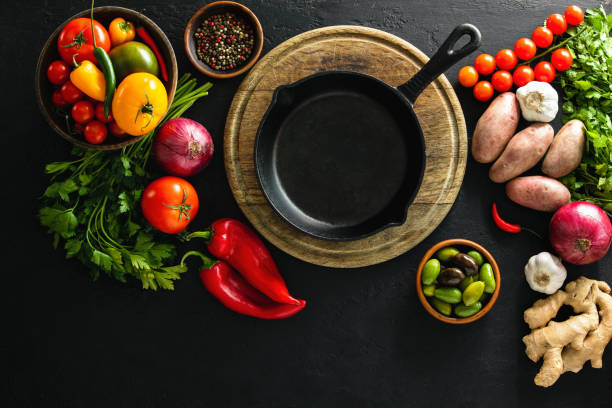
What Not To Cook In Cast Iron Pan
Preserve your cast iron pan by avoiding acidic or delicate ingredients that can erode its surface. Let’s explore what not to cook in a cast iron pan and ensure its longevity.
Acidic Culprits
One of the cardinal rules for cast iron care is steering clear of acidic foods. Tomatoes, citrus fruits, and vinegar-based dishes can react with the iron, compromising the seasoned layer.
The result? A metallic taste in your meal and potential damage to your pan’s surface. When whipping up tomato-based sauces or citrus-infused dishes, opt for stainless steel or non-reactive cookware.
Delicate Delights
While cast iron excels at hearty and robust dishes, it may not be the best choice for delicate foods like fish or flaky pastries. Delicate items can easily stick to the pan’s surface, making flipping and serving a challenge.
Choose alternative cookware for delicate fare to avoid frustration and ensure your cast iron remains dedicated to its strengths.
Excessive Moisture Menace
Excessive moisture can be the Achilles’ heel of cast iron. Steer clear of boiling or simmering liquid-heavy dishes for extended periods. Prolonged exposure to moisture can lead to rust, compromising the pan’s durability.
If you’re whipping up a stew or soup, consider opting for an enamel-coated cast iron or other non-reactive cookware.
Sticky Situations
Certain sticky substances can wreak havoc on your cast iron’s seasoning. Sugary concoctions like caramel or sticky glazes may create a mess that’s tough to clean and can harm the pan’s surface.
Save these sugary delights for cookware better suited to handling sticky situations, preserving your cast iron for dishes that truly benefit from its unique qualities.
The Basics of Cast Iron Cooking
Cast iron cooking, a culinary art steeped in tradition, brings forth a symphony of flavors and textures. The basics of cast iron cooking involve seasoning, a process where oil is baked onto the surface to create a natural non-stick coating.
This timeless method imparts a rustic charm to dishes and ensures longevity for these durable kitchen companions. Cast iron skillets and Dutch ovens, revered for their even heat distribution, elevate searing, frying, and slow-cooking to unparalleled heights.
Enthusiasts often praise the versatility of these robust cookware items, describing them as kitchen workhorses that seamlessly transition from stovetop to oven.
With proper care, a well-seasoned cast iron piece becomes a cherished heirloom, embodying the essence of culinary craftsmanship.
Dive into the world of cast iron cooking, where simplicity meets savory sophistication, and experience the joy of creating memorable meals with these timeless kitchen essentials.
6 Foods You Can’t Cook In A Cast Iron Skillet
Here’s a list of things you’re not supposed to cook with your cast iron skillet:
1. Food With A High Acidic Concentration
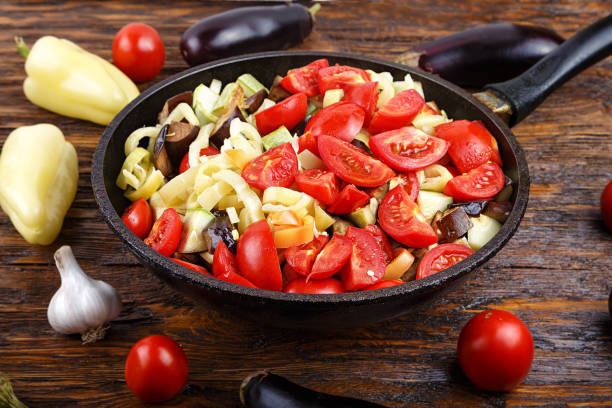
When using cast iron cookware, exercise caution with foods that have a high acidic concentration. Acidic ingredients, such as tomatoes, citrus fruits, and vinegar-based sauces, can erode the seasoning of the pan over time.
The acidity reacts with the iron, potentially compromising the non-stick properties and affecting the taste of your dishes. To preserve the longevity of your cast iron cookware, consider opting for alternative cookware when preparing meals heavy on acidic ingredients.
This simple adjustment will help maintain the integrity of your pan, ensuring it remains a durable and reliable kitchen companion.
2. Wine-Braised Foods
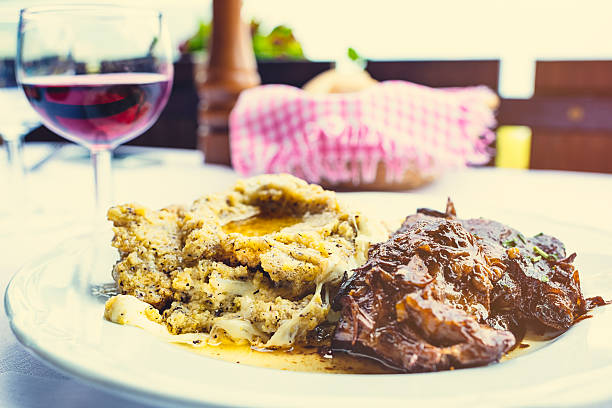
While cast iron skillets are renowned for their versatility, wine-braised foods pose a unique challenge. The acidic nature of wine, coupled with the prolonged cooking times required for braising, can compromise the seasoning of the skillet.
The acid may erode the protective layer, leading to undesirable metallic flavors in your culinary creations. For optimal results, consider utilizing non-reactive cookware like stainless steel or enamel-coated pans when indulging in the art of wine-braised dishes.
This ensures that your cast iron skillet remains reserved for recipes that complement its exceptional heat retention and even cooking capabilities.
3. Delicate Fish
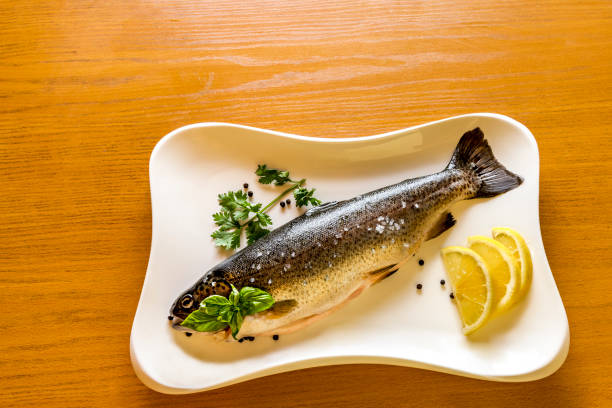
When it comes to delicate fish, caution is advised when using a cast iron skillet. The intense heat retention and potential for sticking may pose challenges, risking overcooking or damaging the delicate texture of the fish.
Opt for non-stick or stainless steel pans for more precise control over cooking delicate fillets. While cast iron excels in various culinary applications, reserving it for heartier proteins and dishes allows you to fully appreciate its strengths without compromising the delicate nature of fish.
Explore alternative cookware options to ensure your seafood creations are cooked to perfection with the desired flakiness and tenderness.
4. Eggs
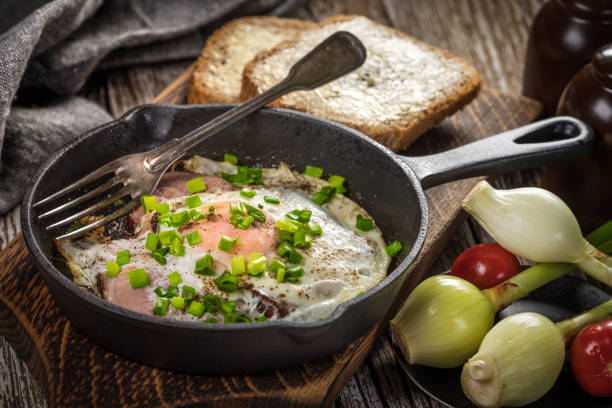
Cooking eggs in a cast iron skillet requires finesse due to its robust heat retention. The potential for sticking can make achieving the desired texture challenging.
For optimal results, use a well-seasoned cast iron skillet or opt for alternative non-stick pans when preparing eggs. This ensures a smoother cooking experience and preserves the delicate nature of eggs without the risk of sticking or overcooking.
While cast iron excels in various culinary applications, employing specialized cookware for eggs allows you to enjoy the best of both worlds—perfectly cooked eggs and the versatility of your trusty cast iron skillet for heartier dishes.
5. Desserts

When it comes to desserts, using a cast iron skillet can be a bit tricky. The prolonged exposure to high heat may lead to overcooking or uneven baking in delicate dessert recipes.
Optimal temperature control, crucial for baking, is challenging in cast iron due to its excellent heat retention. Consider using traditional bakeware with precise temperature regulation for cakes, cookies, and other desserts requiring delicate balance.
Reserve your cast iron skillet for savory dishes where its heat distribution and retention truly shine. Embrace alternative cookware to ensure your desserts emerge from the oven with the perfect texture and flavor.
6. Smelly Foods
Avoid using a cast iron skillet for cooking particularly pungent or smelly foods. The porous nature of cast iron can absorb strong odors, impacting the flavors of subsequent dishes.
Garlic, certain spices, or strongly scented ingredients may leave an undesirable aroma in the skillet. Opt for alternative cookware, like stainless steel or non-reactive pans, when preparing intensely aromatic dishes to preserve the neutral essence of your cast iron skillet.
This way, you can fully appreciate its distinctive qualities without the risk of flavor transfer. Keep your cast iron reserved for dishes that enhance its natural properties without retaining lingering smells.
6 Foods You Can Successfully Cook In Your Cast Iron Skillet Without Damaging It
1. Fried Chicken
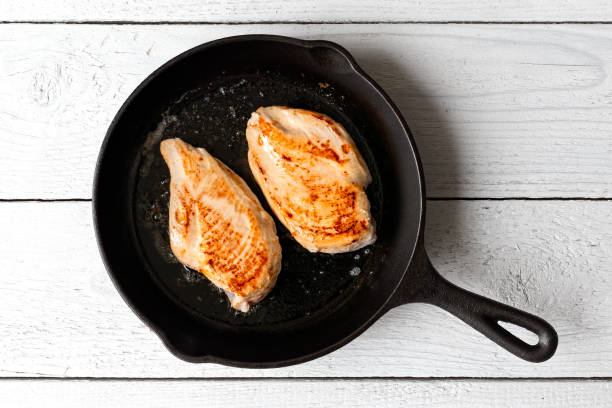
Indulge in the crispy perfection of fried chicken with your trusty cast iron skillet. The skillet’s even heat distribution and excellent heat retention make it an ideal choice for achieving that golden-brown, crunchy exterior while maintaining succulent, juicy chicken inside.
The durability of cast iron ensures consistent frying results, turning your kitchen into a haven for mouthwatering fried chicken creations.
Embrace the sizzle and flavor, letting your cast iron skillet become the secret ingredient for achieving fried chicken perfection without compromising its integrity.
2. Pan Pizza
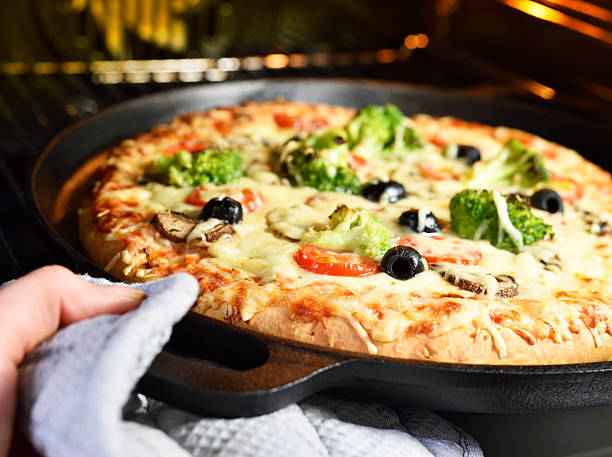
Elevate your pizza experience with a cast iron skillet, transforming your kitchen into a pizzeria. The skillet’s ability to evenly distribute heat produces a pizza with a delectable combination of a crispy exterior and a soft, chewy interior.
From deep-dish wonders to pan-style delights, the cast iron skillet provides the perfect canvas for crafting your pizza masterpiece.
Embrace the versatility of your skillet, allowing it to be the key to achieving a golden, caramelized crust that enhances the flavors of your favorite toppings. Let your cast iron skillet redefine homemade pizza, delivering a delicious and satisfying slice every time.
3. Searing Steak
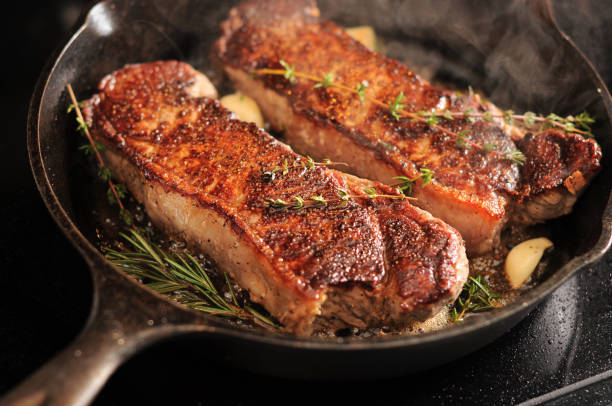
Unleash the power of your cast iron skillet for the ultimate steak searing experience. The skillet’s unmatched heat retention ensures a perfect, even sear, locking in juices and creating a flavorful crust on your steak.
Embrace the sizzle as the high temperatures of the cast iron produce that coveted caramelization, enhancing the richness of your meat.
Elevate your steak game by harnessing the precision and versatility of your cast iron skillet, turning each sear into a culinary triumph without compromising the skillet’s durability.
Welcome the aroma of a perfectly seared steak as your cast iron skillet becomes your go-to for achieving restaurant-quality results at home.
4. Upside Down Cake
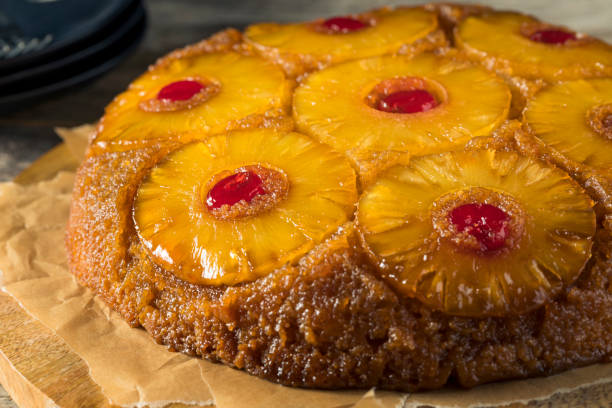
Turn your cast iron skillet into a baking haven with the classic charm of an upside-down cake. The skillet’s even heat distribution and ability to caramelize sugars create a luscious, gooey topping for your cake.
Arrange fruits like pineapple or apple slices on the bottom, let the skillet work its magic, and watch as the cake flips to reveal a beautifully glazed, fruit-studded masterpiece.
Embrace the versatility of your cast iron, as it seamlessly transitions from stovetop to oven, making it the perfect vessel for baking this timeless treat.
Elevate your dessert game, savoring the sweet success of an upside-down cake baked to perfection in your trusty cast iron skillet.
5. Apple Pie
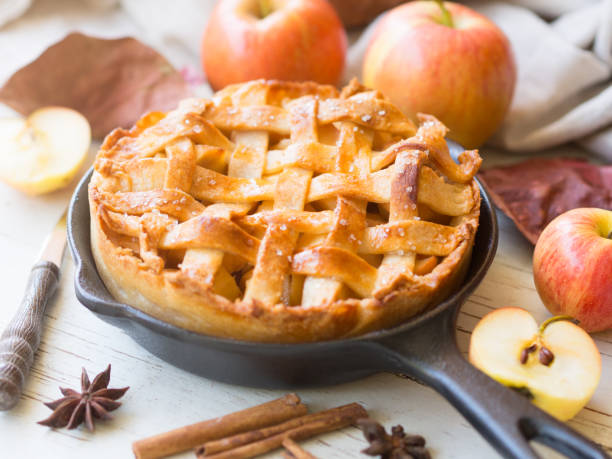
Infuse your kitchen with the nostalgic aroma of a homemade apple pie, elevated to perfection in your cast iron skillet. The skillet’s even heat distribution and superior heat retention create a golden, flaky crust that perfectly complements the warm, spiced apple filling.
Embrace the rustic charm as your cast iron skillet effortlessly transitions from stovetop to oven, ensuring a consistent bake throughout.
Revel in the simplicity of crafting a classic apple pie, allowing the skillet to enhance the flavors and textures that make this dessert a timeless favorite.
Let your cast iron skillet redefine your baking experience, delivering a deliciously satisfying apple pie with a touch of tradition.
6. Giant Cookie
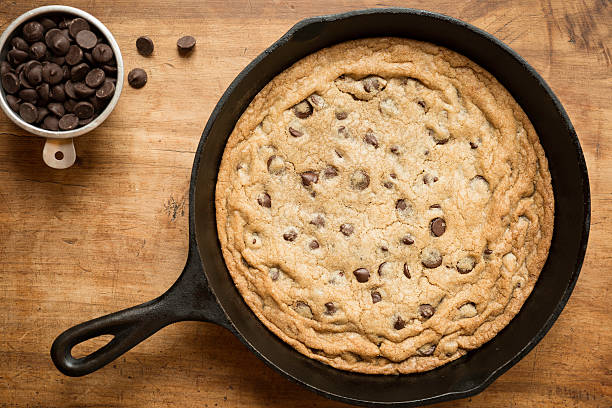
Transform your cast iron skillet into a canvas for indulgence with a giant cookie masterpiece. The skillet’s even heat distribution guarantees a perfectly baked cookie, featuring a crispy exterior and a soft, gooey center.
Embrace the simplicity of this one-pan wonder, allowing the skillet to create a golden-brown perfection that captures the essence of your favorite cookie.
Elevate your baking game with the versatility of your cast iron, seamlessly transitioning from stovetop to oven for a delightful cookie experience.
Share the joy of a giant cookie baked to perfection, as your cast iron skillet becomes the secret ingredient in creating sweet moments of culinary delight.
Cast-Iron Cookware: Composition, Features
Explore the essence of cast-iron cookware, renowned for its timeless appeal and exceptional cooking capabilities. Composed primarily of iron and carbon, this sturdy material is celebrated for its durability and even heat distribution.
The unique features of cast iron include its ability to retain heat, ensuring consistent cooking temperatures, and its versatility, seamlessly transitioning from stovetop to oven. Embrace the rustic charm of well-seasoned surfaces that provide a natural non-stick cooking experience.
With the right care and maintenance, cast-iron cookware becomes a culinary companion, enhancing your kitchen with its robust composition and enduring features.
Dutch Oven
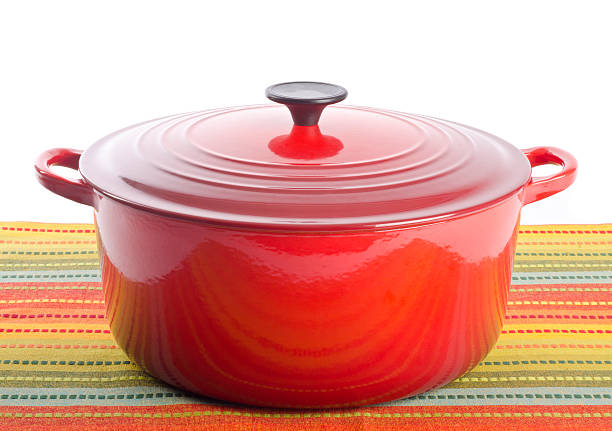
The Dutch oven, a kitchen essential with a rich history, is a versatile and durable piece of cookware. Typically made of cast iron, it boasts exceptional heat retention and even distribution, making it ideal for slow-cooking, braising, and baking.
The pot’s thick walls and tight-fitting lid create an environment conducive to tenderizing meats and intensifying flavors. Its ability to transition seamlessly from stovetop to oven adds to its versatility.
The Dutch oven is celebrated for its durability, and with proper seasoning, it develops a natural non-stick surface over time.
Whether crafting hearty stews or artisanal bread, the Dutch oven stands as a culinary workhorse, embodying both tradition and functionality in the kitchen.
Cast-Iron Skillet
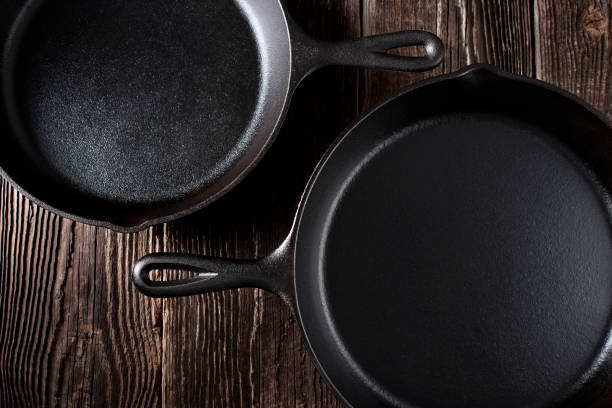
The cast-iron skillet, a kitchen staple revered for its durability and versatility, is crafted from a blend of iron and carbon. Its robust composition ensures even heat distribution, making it a go-to for searing, frying, and baking.
This culinary workhorse excels at creating a perfect sear on meats, imparting a golden crust to dishes like cornbread, and delivering consistent heat for various recipes.
The skillet’s durable construction allows it to seamlessly transition from stovetop to oven, accommodating a range of cooking techniques.
With proper seasoning, it develops a natural non-stick surface, enhancing its performance. Embrace the timeless charm and enduring functionality of the cast-iron skillet as a cornerstone in your kitchen arsenal.
Why Use Cast-Iron Skillet?
It’s Durable
Cast iron is known for its longevity and resilience. With proper care, a cast-iron skillet can last for generations.
It’s Versatile
The skillet’s versatility shines as it can be used for a variety of cooking methods, including frying, searing, baking, and even slow-cooking. It seamlessly transitions from stovetop to oven.
It Has a Good Heating Capacity
Cast iron boasts excellent heat retention and distribution. It heats evenly and holds temperature well, making it perfect for achieving consistent and reliable cooking results.
It’s Easy to Maintain
With the right care, including seasoning and proper cleaning techniques, a cast-iron skillet is relatively easy to maintain. Seasoning creates a natural non-stick surface, reducing the likelihood of food sticking and simplifying cleanup.
Cleaning And Seasoning Your Cast-Iron Skillet

Cleaning and seasoning your cast-iron skillet is essential for maintaining its durability and non-stick properties. Here’s a simple guide:
Cleaning
- Cool Down: Allow the skillet to cool down before cleaning to avoid thermal shock.
- Warm Water Rinse: Rinse the skillet with warm water to remove any loose particles. Avoid using soap, as it can strip away the skillet’s seasoning.
- Gentle Scrubbing: Use a soft brush or sponge to gently scrub off any remaining food residue. For stubborn bits, you can use coarse salt as an abrasive.
- Dry Thoroughly: Towel-dry the skillet thoroughly to prevent rusting. Place it on the stove over low heat to ensure complete drying.
- Oil Application: After drying, apply a thin layer of cooking oil to the skillet’s surface to prevent rust.
Seasoning
- Preheat the Oven: Preheat your oven to a temperature between 375°F to 400°F (190°C to 204°C).
- Apply Oil: Apply a thin, even layer of cooking oil (vegetable oil, flaxseed oil, or canola oil) to the entire skillet, including the handle.
- Wipe Excess Oil: Use a paper towel to wipe off any excess oil. The goal is to have a very thin, almost invisible layer.
- Upside Down Bake: Place the skillet upside down in the preheated oven. Placing aluminum foil on the rack below can catch any drips.
- Bake Time: Bake for about 1 to 1.5 hours. This process polymerizes the oil, creating a durable, non-stick surface.
- Cool Down: Allow the skillet to cool completely in the oven before removing it.
Regularly cleaning and seasoning your cast-iron skillet helps build up its natural non-stick coating and ensures a long-lasting, reliable cooking experience.
FAQs
Can I cook highly acidic foods like tomatoes in a cast iron pan?
Absolutely! It’s advisable to avoid prolonged cooking of acidic foods in cast iron as it may affect the seasoning. However, a brief sauté or simmer should not cause any harm.
Is it okay to cook delicate fish fillets in a cast iron pan?
While cast iron is excellent for many dishes, delicate fish fillets might not be the best choice. The pan’s heat retention can sometimes be too intense for delicate proteins, potentially leading to overcooking or sticking.
Can I cook dairy-heavy dishes like cream-based sauces in my cast iron skillet?
For sure! While cast iron is fantastic for most dishes, it’s wise to avoid extended cooking of dairy-heavy recipes as it might affect the pan’s seasoning. Shorter cooking times, however, pose no problem at all.
Is it suitable for cooking quick-cooking vegetables in a cast iron pan?
Certainly! Cast iron is fantastic for vegetables. Just be cautious with extremely high heat for an extended period, as it might affect the pan’s seasoning. Quick sautés and stir-fries work wonderfully.
Can I cook recipes with a high sugar content, like caramel, in a cast iron pan?
Absolutely, but be mindful of the duration. Prolonged exposure to high sugar content might impact the seasoning. However, short durations for recipes like caramelizing sugar pose no harm at all.
Is it advisable to cook recipes with strong flavors, like garlic or chili, in a cast iron pan?
Certainly! Cast iron enhances flavors. However, for extended periods, strong flavors may leave a lingering taste in the seasoning. Quick sautés or stir-fries with garlic or chili are perfect and won’t pose any issues.
Can I cook large batches of soup or stew in a cast iron pot?
While cast iron is excellent for simmering, be cautious with extended periods of acidic or high-sugar content. It’s recommended for shorter simmering durations to maintain the pan’s seasoning.
Is it suitable for cooking breakfast foods like eggs and pancakes in a cast iron skillet?
Absolutely! Cast iron is fantastic for breakfast dishes. Just ensure not to overheat the pan, especially for delicate items like eggs, to prevent sticking.
Can I cook dishes with wine or vinegar in a cast iron pan?
Certainly! However, avoid prolonged cooking times, as the acidity in wine or vinegar may affect the seasoning. Quick deglazing or adding a splash for flavor is perfectly fine.
Is it okay to cook sugary desserts like fruit cobblers in a cast iron skillet?
Absolutely! Cast iron is great for desserts. Just be mindful of prolonged exposure to high sugar content, as it might impact the pan’s seasoning. Quick bakes are perfect for maintaining the pan’s quality.
Conclusion
In conclusion, while cast iron pans are versatile and excellent for various cooking tasks, there are certain foods that are better suited for other cookware.
Delicate ingredients with high acidity, such as tomatoes and citrus, can react with the iron and compromise the seasoning of the pan. Cooking highly sticky or sugary foods may pose challenges in maintaining the pan’s non-stick surface.
It’s crucial to be mindful of the potential reactions and challenges associated with specific ingredients when using a cast iron pan.
By understanding what not to cook in a cast iron pan, one can maximize the longevity and performance of this beloved kitchen tool, ensuring delicious and well-prepared meals for years to come.